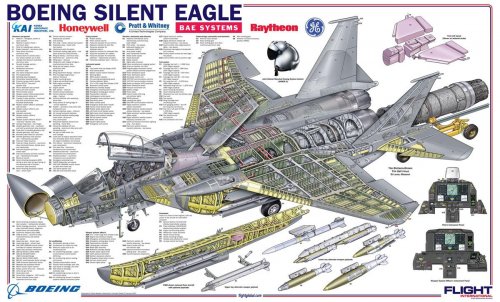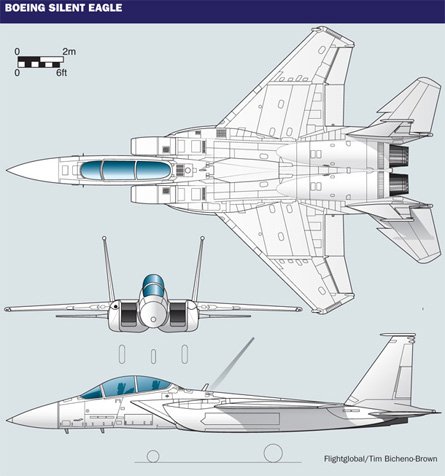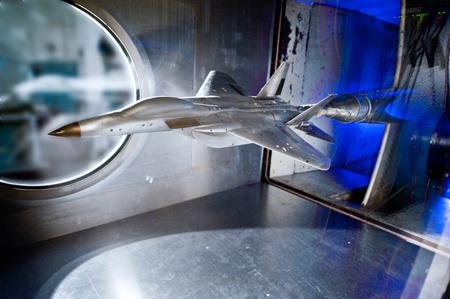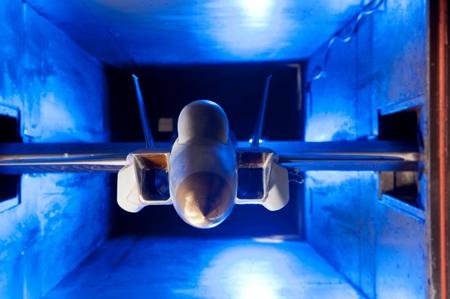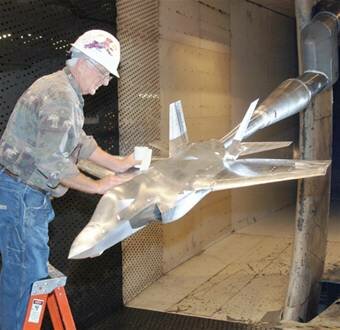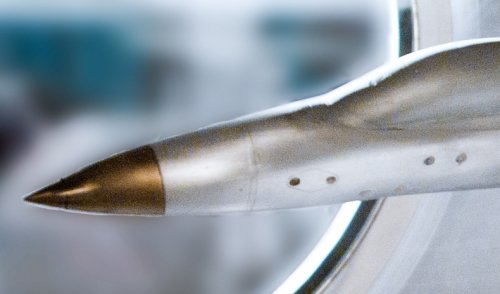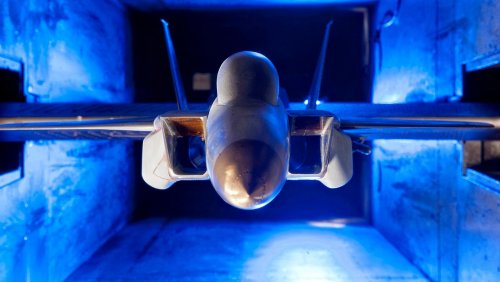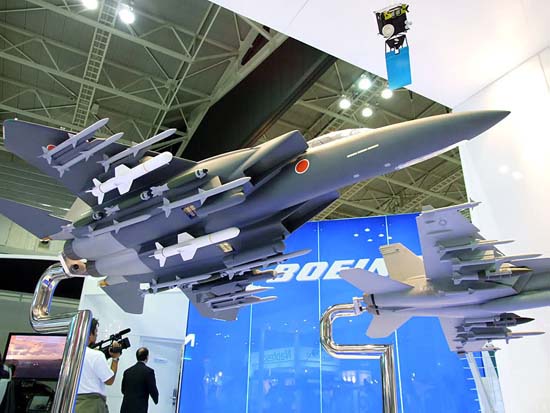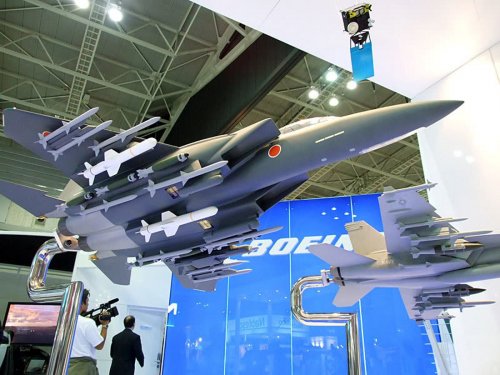You are using an out of date browser. It may not display this or other websites correctly.
You should upgrade or use an alternative browser.
You should upgrade or use an alternative browser.
sferrin said:Wish they had the full rez version so we could read what it said.
I am sure that Flight Global would be delighted to sell you a poster-size print of the F-15 Silent Eagle Cut-Away Poster, sferrin.
- Joined
- 3 June 2011
- Messages
- 18,337
- Reaction score
- 12,240
Triton said:sferrin said:Wish they had the full rez version so we could read what it said.
I am sure that Flight Global would be delighted to sell you a poster-size print of the F-15 Silent Eagle Cut-Away Poster, sferrin.
Hey thanks for the tip there. I'd have never guessed the publish a magazine. :
- Joined
- 3 June 2006
- Messages
- 3,094
- Reaction score
- 3,964
Larger at interactive magazine Flight Daily News Singapore Day 1!
Link: http://cde.cerosmedia.com/1H4f3a42ee676bf012.cde
Link: http://cde.cerosmedia.com/1H4f3a42ee676bf012.cde
- Joined
- 9 October 2009
- Messages
- 21,976
- Reaction score
- 13,636
Boeing angling to offer South Korea F-15SA variant, but F-15K problems persist (Asia Security Watch)
Boeing’s participation in South Korea’s FX-III fighter acquisition bidding will likely remain a roller coaster ride, with Boeing claiming continual advancements in their F-15SE designs, while the Republic of Korea complains about their previous generation of F-15Ks and threatens to leave Boeing behind. The truth is likely somewhere in the middle.
We’d previously reported on Boeing’s lack of effort in developing the F-15 Silent Eagle (F-15SE), a revised F-15 design with internal weapons bays and canted wings, modifications originally favored by the Republic of Korea’s Defense Acquisition Procurement Administration (DAPA). While some of the reports came via the mouths of competitors, little public data hinted at Boeing’s advances with the design. The best sources for project advancements continually came via Korea Aerospace Industries’ research and design of the internal bays and not anything from Boeing’s end.
After various sources (including us) reported on Boeing’s backpedaling with the F-15SE, the company came out swinging, assuring DAPA and the public that the F-15SE was still very much on the table and that tests were progressing perfectly on schedule.
The truth lies between the two extremes. With DAPA sensing the departure of Sukhoi from the bidding war, Boeing’s potential failure to meet DAPA’s needs, and EADS’s design lacking those needs to begin with, DAPA downgraded their initial plans in an attempt to make the bidding war more than just the Lockheed Martin F-35 show.
While Boeing is sticking to their guns on the F-15SE’s progression, it is becoming more and more apparent that the company will offer the ROK a variation of their F-15SA aircraft, recently sold to Saudi Arabia. The regression in DAPA’s requirements makes this an extremely favorable option for Boeing, in transitioning between the construction of the Saudi and potential South Korean orders.
The F-15SA, while lacking the internal bays and canted wings, would be an upgrade to the ROK’s current F-15K from a systems standpoint. Aviation Week reports that the F-15SA features BAE Systems’ digital electronic warfare system, fly-by-wire, dual helmet-mounted displays and various other internal upgrades.
- Joined
- 1 April 2006
- Messages
- 11,394
- Reaction score
- 10,302
Boeing Completes Wind Tunnel Tests on Silent Eagle Conformal Weapons Bay
F-15 Program test milestone validates CWB design
Fighter jet development proceeding on schedule
These images are available for editorial use by news media.
ST. LOUIS, June 25, 2012 -- Boeing [NYSE: BA] recently completed wind tunnel tests on the Silent Eagle Conformal Weapons Bay (CWB). The tests, conducted at the company's St. Louis facility, validated the aerodynamics of the CWB design. CWBs are integral to the adaptable configuration and balanced survivability of the Silent Eagle.
"Boeing and its partners have advanced to the next phase in the development of the Silent Eagle, an evolved derivative of the combat-proven F-15 family of aircraft," said Roger Besancenez, F-15 Program vice president for Boeing. "We are now testing production-representative hardware as we continue to validate our affordable and low-risk design."
Boeing is partnering with Korea Aerospace Industries to design, develop and manufacture the CWB. The Silent Eagle is Boeing's offer in the F-X competition for the Republic of Korea's multirole fighter aircraft.
The wind tunnel tests used a scale model of the Silent Eagle to determine the effect of various air speeds and flight angles. The tests assessed enhancements made to the initial CWB design and confirmed the team's modeling analysis.
More detailed tests later this year will focus on the aerodynamic effects of multiple weapons loads, as well as opening and closing the upper and lower CWB doors.
Boeing this year also completed the final phase of Radar Cross Section (RCS) reduction tests to validate the aircraft's production configuration.
The Silent Eagle is designed with advanced technologies that provide an unprecedented balance of survivability and lethality to meet warfighters' needs in all phases of air combat. The CWBs can be reconfigured to Conformal Fuel Tanks (CFTs) to optimize the aircraft for longer ranges and increased weapons loading, making the Silent Eagle a flexible platform with unmatched range, speed, payload and persistence. The reconfigurable CWB-CFT concept is unique in the fighter aircraft world and contributes to the overall RCS reduction package while the aircraft maintains both air-to-air and air-to-surface capabilities.
The Silent Eagle also features enhanced avionics such as an integrated Active Electronically Scanned Array radar and Digital Electronic Warfare Suite that provide the aircrew with increased lethality and exceptional situational awareness.
A unit of The Boeing Company, Boeing Defense, Space & Security is one of the world's largest defense, space and security businesses specializing in innovative and capabilities-driven customer solutions, and the world's largest and most versatile manufacturer of military aircraft. Headquartered in St. Louis, Boeing Defense, Space & Security is a $32 billion business with 61,000 employees worldwide. Follow us on Twitter: @BoeingDefense.
# # #
Contact:
Patricia Frost
Boeing Defense, Space & Security
Office: +1 314-234-6996
Mobile: +1 314-705-0895
patricia.a.frost@boeing.com
F-15 Program test milestone validates CWB design
Fighter jet development proceeding on schedule
These images are available for editorial use by news media.
ST. LOUIS, June 25, 2012 -- Boeing [NYSE: BA] recently completed wind tunnel tests on the Silent Eagle Conformal Weapons Bay (CWB). The tests, conducted at the company's St. Louis facility, validated the aerodynamics of the CWB design. CWBs are integral to the adaptable configuration and balanced survivability of the Silent Eagle.
"Boeing and its partners have advanced to the next phase in the development of the Silent Eagle, an evolved derivative of the combat-proven F-15 family of aircraft," said Roger Besancenez, F-15 Program vice president for Boeing. "We are now testing production-representative hardware as we continue to validate our affordable and low-risk design."
Boeing is partnering with Korea Aerospace Industries to design, develop and manufacture the CWB. The Silent Eagle is Boeing's offer in the F-X competition for the Republic of Korea's multirole fighter aircraft.
The wind tunnel tests used a scale model of the Silent Eagle to determine the effect of various air speeds and flight angles. The tests assessed enhancements made to the initial CWB design and confirmed the team's modeling analysis.
More detailed tests later this year will focus on the aerodynamic effects of multiple weapons loads, as well as opening and closing the upper and lower CWB doors.
Boeing this year also completed the final phase of Radar Cross Section (RCS) reduction tests to validate the aircraft's production configuration.
The Silent Eagle is designed with advanced technologies that provide an unprecedented balance of survivability and lethality to meet warfighters' needs in all phases of air combat. The CWBs can be reconfigured to Conformal Fuel Tanks (CFTs) to optimize the aircraft for longer ranges and increased weapons loading, making the Silent Eagle a flexible platform with unmatched range, speed, payload and persistence. The reconfigurable CWB-CFT concept is unique in the fighter aircraft world and contributes to the overall RCS reduction package while the aircraft maintains both air-to-air and air-to-surface capabilities.
The Silent Eagle also features enhanced avionics such as an integrated Active Electronically Scanned Array radar and Digital Electronic Warfare Suite that provide the aircrew with increased lethality and exceptional situational awareness.
A unit of The Boeing Company, Boeing Defense, Space & Security is one of the world's largest defense, space and security businesses specializing in innovative and capabilities-driven customer solutions, and the world's largest and most versatile manufacturer of military aircraft. Headquartered in St. Louis, Boeing Defense, Space & Security is a $32 billion business with 61,000 employees worldwide. Follow us on Twitter: @BoeingDefense.
# # #
Contact:
Patricia Frost
Boeing Defense, Space & Security
Office: +1 314-234-6996
Mobile: +1 314-705-0895
patricia.a.frost@boeing.com
Attachments
The tests assessed enhancements made to the initial CWB design...
In that front view the CWB seems a little larger?
- Joined
- 17 October 2006
- Messages
- 2,393
- Reaction score
- 1,197
Wind tunnel tests? How quaint!
Clearly the St Louis peasants don't know that it's all done by modeling and simulation these days.
Clearly the St Louis peasants don't know that it's all done by modeling and simulation these days.
- Joined
- 3 June 2011
- Messages
- 18,337
- Reaction score
- 12,240
LowObservable said:Wind tunnel tests? How quaint!
Clearly the St Louis peasants don't know that it's all done by modeling and simulation these days.
I'm sorry, what was that?


Attachments
Last edited by a moderator:
Or...
F-22 Wind Tunnel
Typhoon Wind Tunnel
F-22 Wind Tunnel
Typhoon Wind Tunnel
- Joined
- 17 October 2006
- Messages
- 2,393
- Reaction score
- 1,197
Scanning my post for a mention of other programs ;D ;D ;D
Grey Havoc said:Boeing angling to offer South Korea F-15SA variant, but F-15K problems persist (Asia Security Watch)
The F-15SA, while lacking the internal bays and canted wings, would be an upgrade to the ROK’s current F-15K from a systems standpoint. Aviation Week reports that the F-15SA features BAE Systems’ digital electronic warfare system, fly-by-wire, dual helmet-mounted displays and various other internal upgrades.
i have to wonder... why not just build all the new F-15's with the slanted tails and other structural mods anyway, even if the buyer doesn't intend to use the radar absorbing material and FAST-pack internal bays?
it doesn't seem like the changes would effect the standard F-15 performance much (given that the silent eagle is supposed to be able to use the FAST-packs of the previous versions once stealth is no longer as important in a conflict), while giving the buyers the option to upgrade to the Silent Eagle version at a future date.
- Joined
- 21 May 2006
- Messages
- 3,002
- Reaction score
- 2,280
flateric said:Boeing Completes Wind Tunnel Tests on Silent Eagle Conformal Weapons Bay
F-15 Program test milestone validates CWB design
Fighter jet development proceeding on schedule
I'm sorry, but is it just me or is the forward fuselage / radome on this wind-tunnel model smaller than the traditional F-15 Eagle??? It's more akin to that of the F/A-18E/F than that of the Eagle or is it just me???
If so is this due to new radar performance and a reduction in RCS??
Regards
Pioneer
- Joined
- 3 June 2011
- Messages
- 18,337
- Reaction score
- 12,240
flateric said:seems that your irony was too delicate, LO
Nah, he's about as subtle as a 2x4 to the head. One of "Low Observable's" chief whines is that LM is using modern analytical tools instead of doing everything in the wind tunnel.
- Joined
- 2 August 2006
- Messages
- 3,255
- Reaction score
- 1,527
Pioneer said:I'm sorry, but is it just me or is the forward fuselage / radome on this wind-tunnel model smaller than the traditional F-15 Eagle??? It's more akin to that of the F/A-18E/F than that of the Eagle or is it just me???
If so is this due to new radar performance and a reduction in RCS??
Regards
Pioneer
I'm not sure if that copper colored area represents the radome, or is even a separate piece. If it is separate, I think it probably ties in with reshaping for lower RCS as you mentioned. Or it could be for purely aerodynamic reasons and may just be the front of a reshaped radome, as opposed to the entire radome itself. Or maybe it's just copper colored for better flow visualization at the nose?
- Joined
- 17 October 2006
- Messages
- 2,393
- Reaction score
- 1,197
Another whiner:
http://www.aviationweek.com/Article.aspx?id=/article-xml/awx_02_06_2012_p0-421701.xml
“What we are seeing is that the optimistic predictions when we started the production of the F-35—that we now have good enough design tools and good enough simulation and modeling that we wouldn’t have to worry about finding things in test—were wrong,” Kendall said. “We are finding problems in all three of the variants that are the types of things, historically in a state-of-the-art, next-generation fighter aircraft, you are going to find, where our design tools are not perfect.”
http://www.aviationweek.com/Article.aspx?id=/article-xml/awx_02_06_2012_p0-421701.xml
“What we are seeing is that the optimistic predictions when we started the production of the F-35—that we now have good enough design tools and good enough simulation and modeling that we wouldn’t have to worry about finding things in test—were wrong,” Kendall said. “We are finding problems in all three of the variants that are the types of things, historically in a state-of-the-art, next-generation fighter aircraft, you are going to find, where our design tools are not perfect.”
- Joined
- 3 June 2011
- Messages
- 18,337
- Reaction score
- 12,240
LowObservable said:Another whiner:
http://www.aviationweek.com/Article.aspx?id=/article-xml/awx_02_06_2012_p0-421701.xml
“What we are seeing is that the optimistic predictions when we started the production of the F-35—that we now have good enough design tools and good enough simulation and modeling that we wouldn’t have to worry about finding things in test—were wrong,” Kendall said. “We are finding problems in all three of the variants that are the types of things, historically in a state-of-the-art, next-generation fighter aircraft, you are going to find, where our design tools are not perfect.”
Whoa, stop the presses. You mean to tell me there was a surprise in a fighter development program? Say it ain't so.
- Joined
- 1 April 2006
- Messages
- 11,394
- Reaction score
- 10,302
Pioneer said:or is the forward fuselage / radome on this wind-tunnel model smaller than the traditional F-15 Eagle???
Attachments
NUSNA_Moebius
I really should change my personal text
- Joined
- 26 May 2012
- Messages
- 233
- Reaction score
- 136
Realistically how much does such a small cant improve either the pitching moment or reduce the RCS? Assuming the aerodynamics were sound, it seems a much further cant would've been more beneficial.
Also, does the purely CFT/"internal" weapons bay config allow for supercruise at all?
Also, does the purely CFT/"internal" weapons bay config allow for supercruise at all?
- Joined
- 21 April 2009
- Messages
- 13,756
- Reaction score
- 7,697
Forty Years of Soaring Eagles: The Air Force marked the 40th anniversary of the first F-15 flight. At Edwards AFB, Calif., on July 27, 1972, an F-15A took to the skies on the type's inaugural flight, according to an Aug. 1 Edwards release. That was after prime contractor McDonnell Douglas (now Boeing) trucked the airplane to Edwards from its manufacturing plant in St. Louis. In July 1973, the first flight of the two-seat F-15B variant occurred, states the release. The F-15, the Air Force's then-new air superiority fighter, entered service some two years later. Over the years, it has evolved from being strictly an elite air-to-air platform into a multirole aircraft with the advent of the F-15E version. Boeing has built more than 1,600 Eagles for the United States, Israel, Japan, Saudi Arabia, South Korea, and Singapore, states the release. Air Force F-15s have served in combat since 1991 in places like Afghanistan and Iraq.
-------------------------------------------------
Best modern fighter ever built (to this point anyway) combat record of 104-0, at last count but probably expect a few Iranian fighters to go down in the next 12 months and add to the count.
-------------------------------------------------
Best modern fighter ever built (to this point anyway) combat record of 104-0, at last count but probably expect a few Iranian fighters to go down in the next 12 months and add to the count.
- Joined
- 6 August 2007
- Messages
- 3,894
- Reaction score
- 5,978
NUSNA_Moebius said:Realistically how much does such a small cant improve either the pitching moment or reduce the RCS? Assuming the aerodynamics were sound, it seems a much further cant would've been more beneficial.
Also, does the purely CFT/"internal" weapons bay config allow for supercruise at all?
As far as the RCS, it can be a *lot*.
Sad and funny how boeing is referring to this as a "silent" eagle. Clever. No mention of stealth. The idea that this is even approaching a stealth plane is ridiculous. Pure marketing. That said, it would've been interesting to see a truly "stealthy" F-15 variant. A new wing and tail (why not like the V-tail pelikan proposed for south Korea?) proper planform alignment, radar blocker/inlet redesign, chined nosecone...now we're getting somewhere.
- Joined
- 6 August 2007
- Messages
- 3,894
- Reaction score
- 5,978
kcran567 said:Sad and funny how boeing is referring to this as a "silent" eagle. Clever. No mention of stealth. The idea that this is even approaching a stealth plane is ridiculous. Pure marketing. That said, it would've been interesting to see a truly "stealthy" F-15 variant. A new wing and tail (why not like the V-tail pelikan proposed for south Korea?) proper planform alignment, radar blocker/inlet redesign, chined nosecone...now we're getting somewhere.
Boeing has not claimed that this is a VLO aircraft, only that it has reduced observables given the options package they are offering. That said, with those options - including the tails - the aircraft would have a significantly reduced signature in several relevant bands and aspects. Enough to make it attractive to potential customers.
"Planform alignment" and radar blockers, when properly used, can reduce the observables of some aircraft designs. This does not mean that slapping these kinds of features on some existing design is going to lower its signature in any useful way. Instead, low observables engineers look at the whole aircraft and use the tools at their disposal to model and test potential configurations.
Or they just coat it with magical RAM paint and call it day. That seems to be the consensus on the interwebs.
lantinian
ACCESS: Top Secret
- Joined
- 24 March 2007
- Messages
- 539
- Reaction score
- 174
lantinian
ACCESS: Top Secret
- Joined
- 24 March 2007
- Messages
- 539
- Reaction score
- 174
chuck4 said:That's not the F-15SE
There is a difference between what can be attached to the plane, and what the plane can carry far enough to any practical combat mission objective without being shot down.

While what Boeing has finally offered to the Koreans maybe lacking the F-15SE internal bays and canted fins, the external weapons configurations are those of the Silent Eagle and with the 3 Harpoons replaced by Tanks, it has 1000 NM range.
SlowMan
I really should change my personal text
- Joined
- 9 September 2012
- Messages
- 154
- Reaction score
- 8
It's called F-15FX, a model offered to Japan in the recently concluded Japanese F-X contest.lantinian said:I didn't find this picture in the tread so far.
Japan rejected the F-15FX because it could not be license-produced in Japan; Korea had an exclusive manufacturing rights to all F-15E derivative fuselage and main wings.
lantinian
ACCESS: Top Secret
- Joined
- 24 March 2007
- Messages
- 539
- Reaction score
- 174
Thanks a lot. I didn't know about the F-15FX proposal.
Seams the F-15SE is salvaging some of that proposed technology.
I am wondering why we don't have a topic for it yet. There seam to be a lot more image results on Google
Seams the F-15SE is salvaging some of that proposed technology.
I am wondering why we don't have a topic for it yet. There seam to be a lot more image results on Google
kcran567 said:If you are a Silent Eagle, how comfortable are you going to be if there are Pakfa's lurking in the area of opertation?
You feel a sense of infinite peace as you drift slowly upwards through the clouds into a brilliant warm light from above.
lantinian said:Given the F-15SE low frontal RCS and powerful AESA radar, its not going to be picnic for the T-50 pilot either.
Yeah, you can't run, you can't hide, but that doesn't matter, you have a decent chance of finding out how you will die before he actually kills you.
Evil Flower
ACCESS: Secret
- Joined
- 12 October 2006
- Messages
- 223
- Reaction score
- 63
Or that could be a concern some years in the future when the Russians have managed to build more than a handful T-50s.
More interstingly - are those Harpoons on the CFT rails in the top picture? If they finally certify those pylons for bulky missiles the F-15SE will become a payload monster! It always has been with respect to free-fall bombs, where (combined with the compact size of US GBUs) not even the Flanker could match it - but with missiles (Harpoon, HARM, JASSM) the only available hard points used to be those already required for external fuel tanks. So with more than one such missile range was seriously restricted because drop tanks were displaced (the CFTs aren't really a substitute for external fuel but a necessity - without them internal fuel capacity is only about 60% of a Flanker's).lantinian said:While what Boeing has finally offered to the Koreans maybe lacking the F-15SE internal bays and canted fins, the external weapons configurations are those of the Silent Eagle and with the 3 Harpoons replaced by Tanks, it has 1000 NM range.
Similar threads
-
-
-
-
-
F-15 Kai Eagle Plus & F-16 Kai Night Falcon from "Patlabor 2" movie
- Started by Hicks
- Replies: 2

